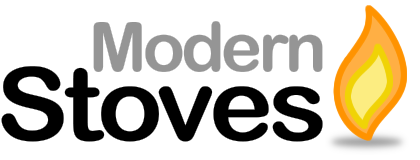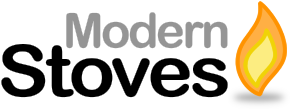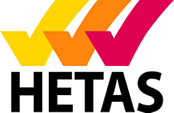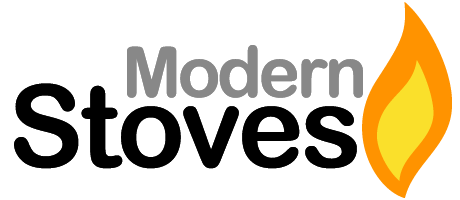Operating A Stove
Operating & Lighting Your Stove
Whether you are new to stoves or an experienced user there’s something uniquely satisfying about lighting your own fire, and to assist we have compiled a few helpful tips.
Each Stove has its own characteristics, and as you become more experienced and get to know your particular stove you will perfect your own method of lighting and controlling the fire.
The First Lighting of Your Stove:
When your stove has been installed and it is ready to be used for the first time, before lighting the fire we would recommend that you check the stove door and handles are properly secured, and that all the internal linings and baffles are in their correct position, as sometimes they can become loose or dislodged during transit. Additionally please check inside the firebox for any supplementary tools / spares.
We would advise that you make the first fire small, in order to allow the stove and paint finish to adapt to the heat. During the first fire the paint finish will be vulnerable to damage through physical contact whilst it cures. In addition the rope seal on the stove door is also prone to sticking to the body of the stove if the door is locked shut. We recommend that you avoid latching the door during the first fire. Essentially the materials of the stove need time to adapt to the effects of the heat. NB. THE DOOR SHOULD NOT BE LEFT AJAR DURING USE OF THE APPLIANCE!
As a safety feature some models have a spring loaded hinge on the firebox door, this is adjustable and may require some adjustment in order to apply more or less tension to the self closing sprung hinge.
Fire Lighting and Stove Operation Hints:
Using the Air Vent(S)
New, modern style stoves are designed and manufactured with to provide optimum efficiency regarding emissions, fuel consumption and energy conversion.
This means that they are not as controllable as older style stoves in the traditional sense of using the air vents to regulate the burn rate. The option to reduce the burn rate to a low simmer via adjustment of the air vents is no possible as low burning does not provide the highest efficiency in terms of emissions, fuel consumption or energy.
The primary air vent is used for the initial lighting of the stove, and this is then closed if burning wood only as wood does not require air from underneath the fuel to burn. If burning fuels other than wood, you will require the primary air vent to be open at least half way during the burning process. The secondary air should be left open during the burning process. On some stoves the secondary air is provided through the stove above the glass and does not have a separate air control. If the stove does have a secondary air control you will notice that this does not assist in damping the fire down. This air is pulled into the stove as a curtain of warm air that is used to keep the glass clean and enable the most efficient burning conditions.
1. Chimney issues – concerning installation, air draught, or the type of flue that has been used.
NB. Modern Stoves recommend that single wall flue pipe is used from the appliance before twin wall flue pipe is introduced. This is because single wall flue pipe gets hot much quicker than twin wall flue pipe and the heat creates chimney draw.
2. Fuel type, or condition: We recommend that you bring your fuel in to your property 24 hours prior to lighting your stove, especially if the outside temperature is sub 8 degrees. Damp fuel, or wood with a high moisture content is difficult to light or establish a fire with. Just because wood feels and looks dry, it doesn’t mean that it is dry or suitable for burning, even if it has been purchased from a seemingly reputable source. If the fuel produces smoke, an acrid smell, or a black tar appears in your stove, then the fuel is unfit for use and will require months of dry storage before attempting to use it again. Continues use of this type of fuel may damage your chimney.
3. User error: The air vent (s) should be set to open before attempting to light the stove. The fire should be started by using a “generous” amount of dry kindling (sticks or slight cuts of softwood) and firelighters. Natural Fire lighters burn for longer and produce less smoke than Paraffin-Wax based Fire Lighters. Allow the kindling to burn until the flames have gone out and the kindling is reduced to red glowing embers, only then should the door be opened to add fresh fuel to the firebox. Opening the Firebox during periods where flames are present is dangerous and smoke leakage can occur, especially when the appliance and chimney have not reached their optimum temperature.
4. Insufficient Air to the room the Room / Stove: On any stove that offers a nominal output of greater than 5kw, an external air vent should be fitted to the room, to allow a permanent source of air to the stove. Building regulations (Part J and Part L) should be followed with regards to the requirement of permanent air supply to the room where the stove is installed.
Lighting Tips: We recommend that you open the door to the stove by a few inches for 20-30 mins prior to lighting the stove to allow warm air to pass up the chimney and clear any condensation that has formed in the chimney. When your stove is not in use we recommend keeping the air vent(s) open to allow warm air from the room to be drawn in. If the outside temperature is either too warm or too cold, you may experience poor draw when you first light the stove due. This is due to the difference in air pressure inside the flue and outside. If this situation occurs more dry kindling is required to establish a good fire with plenty of initial heat to create chimney draw.
User Error:- The door should never be opened whilst flames are present in the firebox, otherwise smoke may spill out from the firebox in to the room. Fuel i.e. logs should only be added to the firebox once the kindling has become glowing embers, this is when the burning fuel is at its highest temperature. If you open the firebox door whilst the stove is displaying flames you will encounter smoke spillage. The stove door should never be opened to add additional fuel until the existing fuel is reduced to hot embers. Some spillage is less likely to occur when the appliance is at its optimum operating temperature.
Insufficient Air:- If you have extractor fans in any part of your property, including bathrooms, you may experience smoke spillage either during operation of the extractor, or after operation of the extractor. The extraction of air from your property can create an in-balance in the air pressure between the room and the firebox of the stove. The result is that when you open the door, the air within the firebox will rush out into the room to balance the air pressure. If there is smoke in the firebox or the chimney, and the door is opened, it may spill out into room. This is called back puffing. Opening the door slowly will reduce the smoke spillage and back puffing if it is evident. Sufficient permanent air for the stove should be fitted during the installation process, this should be calculated with any extraction devices, age of property, insulation properties taken into consideration. Please seek advice from your fitter with regards to this
Top causes of poor operation.
Twin wall flue pipe has been used from the appliance instead of Single wall flue pipe, this can lead to poor draw during initial lighting.
Cold or Damp Fuel –Store fuel inside for 24 hours prior to burning.
Insufficient Chimney Flue Draft – Increase the height of the chimney. Excessive Chimney Flue draft – Flue draft stabiliser should be fitted.
Poor Air supply to the room, or extractor fans operating in the property, or a tumble drier in operation.
Cold and still outside conditions – open the firebox door to allow air to pass up the chimney.
Black tar appears in the stove – The fuel contains a high moisture content, STOP using it.
Smoke Spillage when opening the door – Never open the door whilst fire is present, wait until the existing fuel has become glowing embers before re-loading with new fuel.
Blackening Glass – Check that the secondary air vents are open at least 25% open. Check that the fire rope seal on the door has not come away or slipped. An overlap in the rope seal can lead to blackening of the glass.
Never overload the stove with fuel, and bank fuel towards the back of the appliance. The fill level is the bottom of the door opening on most stoves. Stacking fuel can be dangerous, since the fuel may topple forwards and break the glass.
An unusual cause of poor draw can be caused by the vermiculite throat plate being incorrectly placed in the top of the stove. The throat plate forms the ceiling of the firebox and it should be positioned so that it leaves a gap at the front of the stove – closest to the door.
Stove Operation – Symptoms and possible solutions:
Difficulty Lighting:
Wood has a high moisture content (it may appear dry). Inadequate ventilation to the room. Blocked Flue / Chimney system. Insufficient or too greater Flue draught.
Smoke enters the room when opening the door:
Only open the door when the current fuel is reduced to hot embers. The door should NEVER be opened when flames are present. Open the air Vents to fully open, if the problem persists check the supply of air ventilation to the room.
Rapid / Aggressive Burning:
Check the rope seals on the door, for overlap or flattening, or breaks. Check the flue draught, and fit a flue draught stabaliser if excessive draw is present. Too greater quantity if fuel or too much of a type of fuel, for example high temperature Anthracite.
Low Heat Output:
Insufficient flue draft – increase height of flue / chimney. Check for blockages or breaks in the flue / chimney. Burn dry seasoned wood with a low moisture content. Check use of the appliance controls.
Blackening of Glass window(s):
Can be caused by wood with a high moisture content. Can be caused by dirty fuel. Can be caused by overlap in the door seal or poor door seal. Can be caused by insufficient flue draft (see above). Operating the appliance at a continuous low temperature. Fitting a flue pipe thermometer will allow optimum performance to be reached.
Health and Safety
Installation should be in accordance with the manufacturer’s instructions and local building regulations.
Always wear suitable gloves when attending to the stove.
Over cramming the stove with logs / wood (over firing) is both dangerous may cause damage to the stove, which will void the warranty.
Be mindful that when you open the stove door, logs and hot debris may roll out of the firebox towards you. Never open the door when the flames are high.
Always ensure that the firebox door is closed both when in operation and when out of operation.
We would recommend that you have your chimney or flue cleaned every 12 months.
Never use flammable liquids to light the fire.
Never open the door when the flames are high.
Never place objects on, or in the stove that may cause explosion, i.e. gas lighter, TV remote control, flammable liquids etc, etc.
Never place combustible objects on, or near the stove.
Never use spirits to clean the stove, as this can remove the paint.
Never use abrasive cleaning materials to clean the ceramic glass, or the stove.
Modern Stoves: 0161 439 1400




